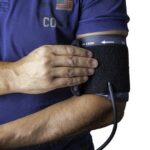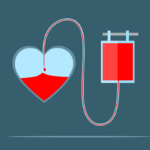A typical childhood disease in children chicken pox is very notorious for being contagious. A kid infected with the chickenpox virus will develop numerous itchy blisters which are filled with fluid. These blisters burst later, which leads to crust formation. Children get approximately five hundred such blisters which grow over a red skin spot. They show up on the face first and then spread to the trunk, scalp, and the rest of the body. After a day of appearance, the fluid-filled blisters become cloudy and later on, scabby.
The itchiness caused due to chicken pox is really intense and irritating. And the crust, if not treated, can leave marks for life. Within forty-eight hours of getting infected, the symptoms begin to surface. It is only ten to twenty days after the contamination, that the pox appears. Symptoms include fever, abdominal pain, headache, loss of appetite, and finally the pox rash. The condition can be confirmed by testing the pox blisters and by even taking a blood test. The medical history of the child can be helpful in determining the severity of the condition.
The virus blameworthy for infecting a person with chickenpox is varicella-zoster or simply, varicella. The virus spreads through airborne transmission, droplet transmission, and direct contact. Not only do the infected carry these viruses and should be avoided, also people or kids who have taken the vaccination recently should also be avoided. Since the invention of the chickenpox vaccine, there has been a decline in chicken pox cases. Children who are under the age of ten should be highly prepared as they are more prone to getting infected by this virus. But on the contrary, when older children or adults catch chicken pox, they become sicker when compared to young kids.
A child or a person who has been infected by the chicken pox virus becomes host to the virus for a lifetime. But the number is kept under control by the body’s immune system. Infants, sometimes, get partial immunity from the blood of their mother, if the mother was already infected by chicken pox. Kids of mothers, who haven’t been infected by chicken pox, tend to get severe chickenpox. Children who have been administered with chickenpox vaccination get mild chicken pox. The skin conditions of children with skin problems like eczema or sunburn can worsen. Such kids can be getting above one thousand and five hundred poxes. Children who have taken steroids can also face a bad situation.
Along with the application of the prescribed lotion and intake of oral medication containing antihistamine, the itchiness can be eased by bathing the child in lukewarm water and oatmeal. The antiviral medications should be started within the first day itself. Other people living in the same household as of the patient should also take antiviral medicines recommended by a doctor. It is a must for everyone to take chicken pox vaccination as a part of the immunization routine schedule. There is a hundred percent chance of not developing moderate to severe chickenpox and nearly ninety percent chance of not developing mild chickenpox. The chickenpox vaccine is the only vaccine that doesn’t demand a booster. But a higher dose can be given to adolescents so as to avoid shingles or herpes zoster. But a doctor should be consulted before opting for the higher dose.
Views: 0












